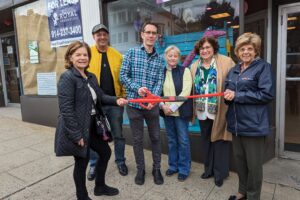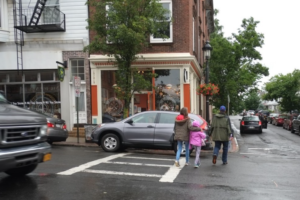 |
|
Build It and They Will Come |
The nation’s waterfronts, particularly those that abut the great rivers of our country, are now making changes that have not been seen since the nation was founded.
Where the old warehouses, docks and railroads once stood, condominiums, marinas, and restaurants are replacing them. On balance, the new replacements will provide new and needed revenue for their host villages. But, they will also bring problems of their own, such as increasing populations in areas that may be crowded already, pressure on school systems to handle new students, an expanding and costly infrastructure, and most particularly, all of this occurring on narrow roads built for an earlier time. Tarrytown currently has an agreement in place with developer National RE/Sources to complete the review of the final Site Plan within six months before building is to begin.
In a recent interview with Tarrytown Village consultant Frank Fish of BFG Planning in NYC, Fish outlined the many other Hudson River projects that are in various stages of development or planning. Twenty-year- old BFG has completed various projects throughout the world, providing urban design, environmental analysis and real estate and transportation planning for a variety of domestic and international clients. Fish began by citing the dramatic renovation of the Yonkers waterfront with a new ferry pier that may soon provide water commutation to and from New York City, Yonkers and Newburgh. Ossining is likewise re-doing its own downtown area, simultaneously wrestling with the idea of possibly taking over the Sing Sing property with additional waterfront investments in housing, retail and restaurants. Irvington has made a decision to provide a mixture of parkland and office space. Croton-on-Hudson currently has a new addition to Half Moon Bay and a landfill neck out into the Hudson that serves as a village and area park.
As one heads north, Poughkeepsie is currently building over 100 riverfront units. Cold Spring is building on inland roads that lead from the river, and across the river, Newburgh itself is in the middle of developing its own waterfront with several excellent restaurants and retail stores. Newburgh is also allowing housing on the river to accompany this initial activity. Across the river from Newburgh, Beacon is also going through the same transformation. Further up the Hudson in the Albany area, Rensselaer is similarly developing their waterfront, as is nearby Hudson with their brand new antique stores and restaurants.
There is probably not a river or a waterfront in the U.S. that has not or will not soon undergo this same transformation. Indeed, Fish cites one of BFG’s recent projects in Hartford, CT, that allowed the city to circumvent its highway system in order to develop one side of the city all the way over to the banks of the Connecticut River. In order to complete this development, Highway #91 had to be lowered to go under "Founder’s Bridge" in order to "recapture," as Fish puts it, the Hartford waterfront.
Fish pointed out that in almost all of these redevelopments, the initial rise of retail and restaurants leads to tourism and recreational visits. That, in turn, leads to new residential interest. Fish commented that a secondary level of redevelopment sometime in the future will be the revitalization of older, blighted neighborhoods that often abut these newly developed areas. Depending on what State you are in, affordable housing may or may not be mandated in these new higher priced developments. Fish concluded his interview by noting that some of the ensuing traffic snarls that could be created might very well be labeled, in environmental impact terms, an "unmitigated effect." To that point, Fish did have an encouraging word of advice for towns now considering a waterfront development, i.e., by lessening office space in a new development, new traffic can be diminished by as much as half.
The final outcome, says BFG and Fish, is that all of the riverfront communities are developing exciting and, in most cases, intelligent plans for their waterfront. But it is equally evident to many citizens that, in the middle of all this excitement, heavier traffic is stalking the capacity of our very limited roads, and many lower income families are going to be faced with some life-altering decisions.






